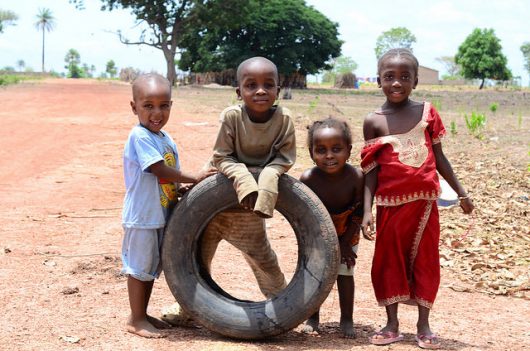10 Facts About Refugees in Gambia

The Gambia is a tiny nation, bounded by Senegal, on the west coast of Africa. The primary economic drivers in the country are tourism, agriculture and remittances from overseas. Between 2013 and 2016, it is estimated that real GDP per capita fell by 20 percent, suggesting an increase in poverty levels. The poor economy and recent political tensions are two main reasons why thousands of Gambians seek refuge elsewhere, hoping for a better life for themselves and their families.
Here are 10 facts about Gambian refugees:
- Around 45,000 people fled to neighboring Senegal after a contentious 2016 presidential election. Incumbent President Yahya Jammeh, who had led the country for 22 years following a military coup in 1994, was defeated by his opponent Adama Barrow. After initially accepting the outcome, Jammeh refused to step down and called for a new election. After Jammeh was exiled in January, many Gambians returned home from Senegal.
- Gambians currently account for more than seven percent of refugees making the deadly crossing over the Mediterranean to mainland Europe. Considering The Gambia has a population of fewer than two million, Gambians make up a disproportionate percentage of migrants arriving into Europe. According to the International Organization for Migration (IOM), 11,929 Gambians arrived in Greece and Italy in 2016.
- The method of attempting to get into Europe via the Mediterranean is colloquially known as the “Backway.” The flood of Gambians heading for Europe has become such a problem that the Gambian government has launched ad campaigns that attempt to dissuade would-be migrants with slogans such as, “Say No to the Backway.” In 2016, at least 5,000 migrants perished or went missing attempting to make the perilous crossing.
- Most Gambian refugees seeking asylum in Europe are between the ages of 14 and 34. According to Richard Danziger, IOM’s regional director for West and Central Africa, “The numbers are huge; I understand there are villages [in Gambia] with no young males left.”
- Most Gambian refugees are economic migrants. According to 2010 figures from the World Bank, the poverty rate in The Gambia was 48.4 percent. Over-reliance on tourism, agriculture and remittances have resulted in an undiversified economy that is vulnerable to external shocks and lacking opportunities for many Gambians.
- Instability in Libya has created an unguarded coastline in North Africa; smugglers are taking advantage and expanding their networks. Widespread violence and instability continue to plague Libya as the conflict continues after the ousting of Muammar Gaddafi in 2011.
- Gambian refugees in Libya are at risk of exploitation in modern-day “slave markets.” The IOM reports hundreds of migrants — including Gambians — being kidnapped, sold and either extorted for more money or forced into labor.
- According to the World Bank, 20 percent of Gambia’s Gross Domestic Product (GDP) comes from remittances. Relatives of those who make it to Europe are able to build new homes with the remittances they receive. Their success is alluring for many and provides a powerful incentive for people to risk their lives for the chance of a better life for themselves and their families back home.
- According to Eurostat, the EU statistics organization, there were 14,735 first-time asylum applications from The Gambia in 2016 to the following countries: Italy, 8,850 (56 percent), Germany, 5,655 (36 percent), Austria, 230 (one percent).
- The EU set up the Emergency Trust Fund for Africa in 2015 in an attempt to address the migrant crisis. The Trust Fund is worth more than €2.6 billion and focuses on projects that endeavor to address the root causes of irregular migration. The Gambia is one of the countries eligible to receive this assistance.
President Adama Barrow has promised to try and create jobs in an effort to stem the tide of Gambians leaving via the “Backway.” Barrow will serve only three years because he is not able to stand in the next election, but there are hopes that he can initiate urgently needed reforms and help lay the foundations for economic growth and prosperity.
– Michael Farquharson
Photo: Flickr
